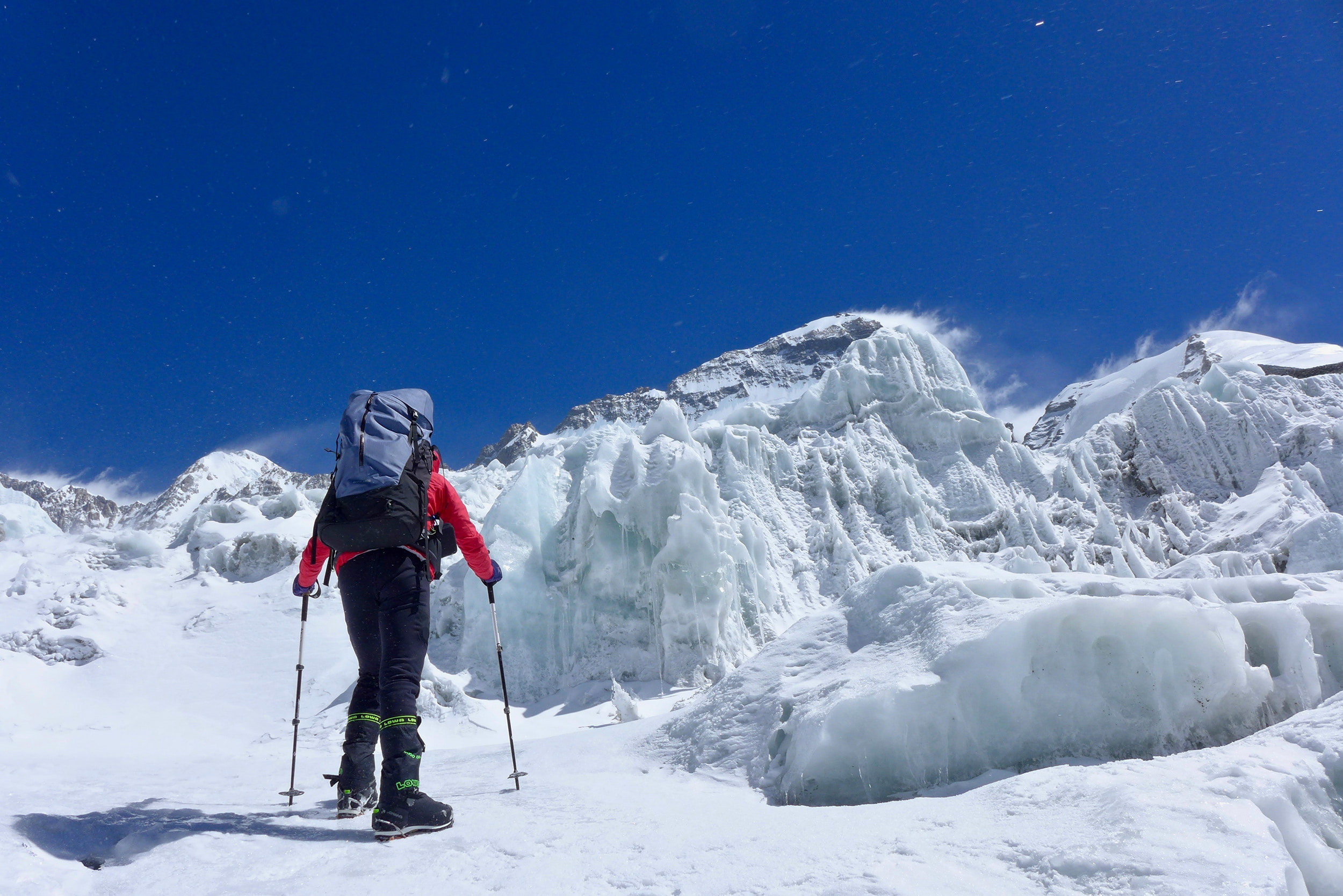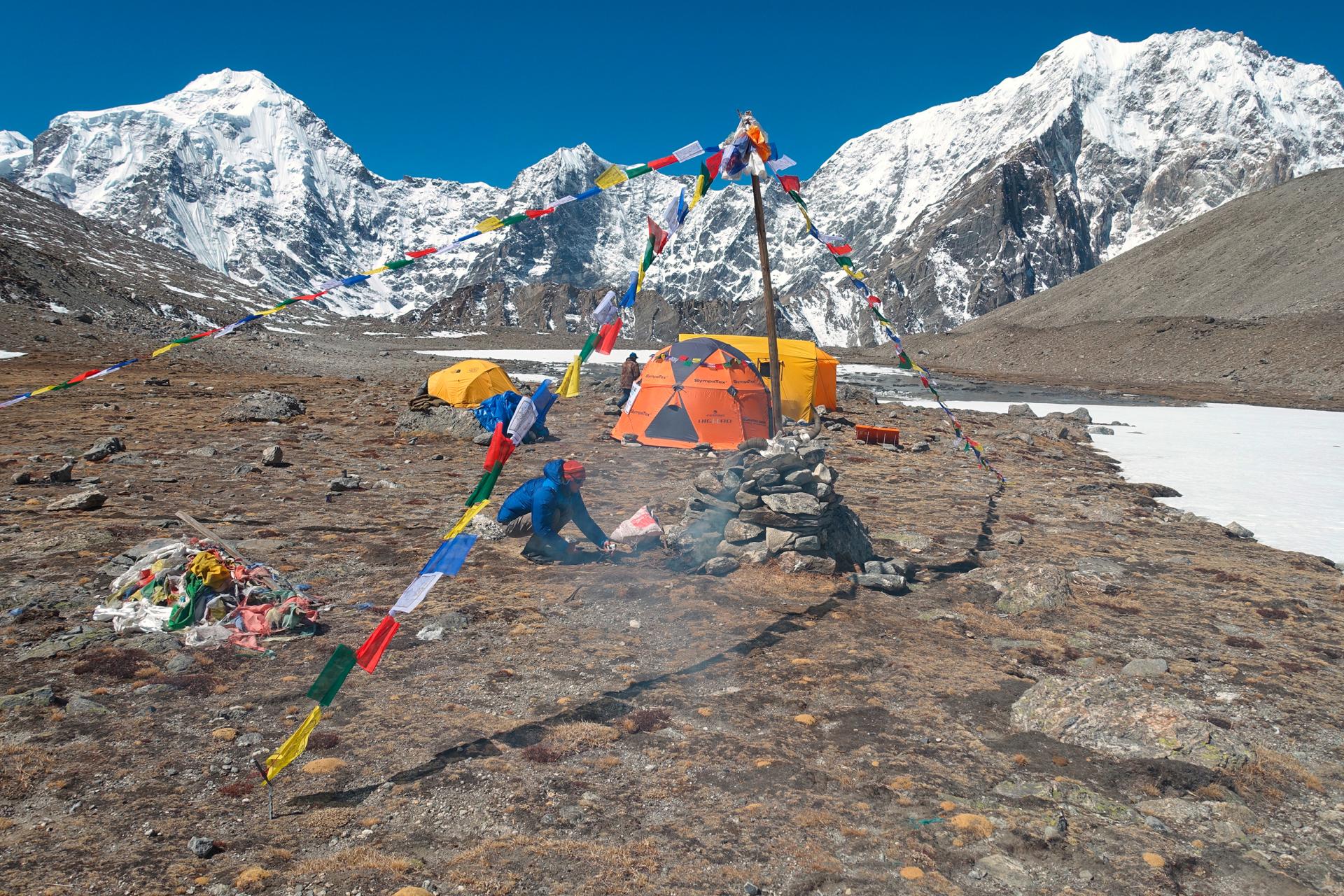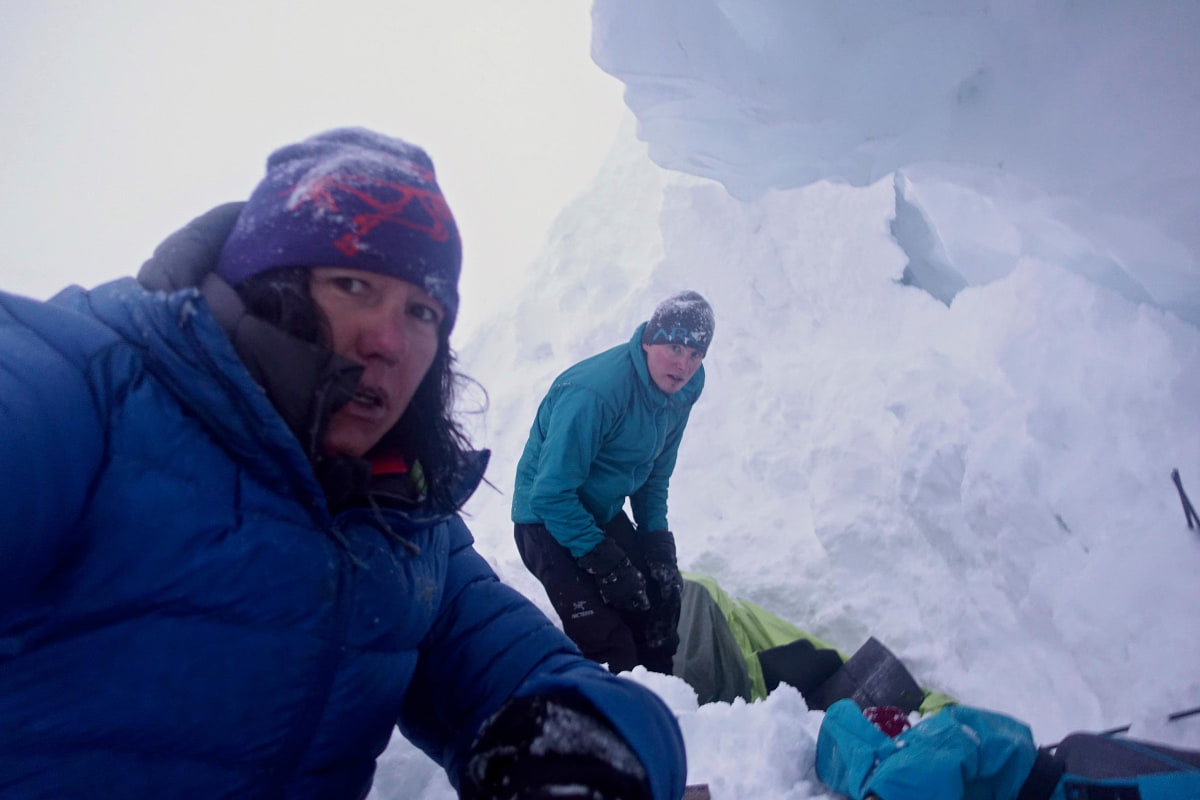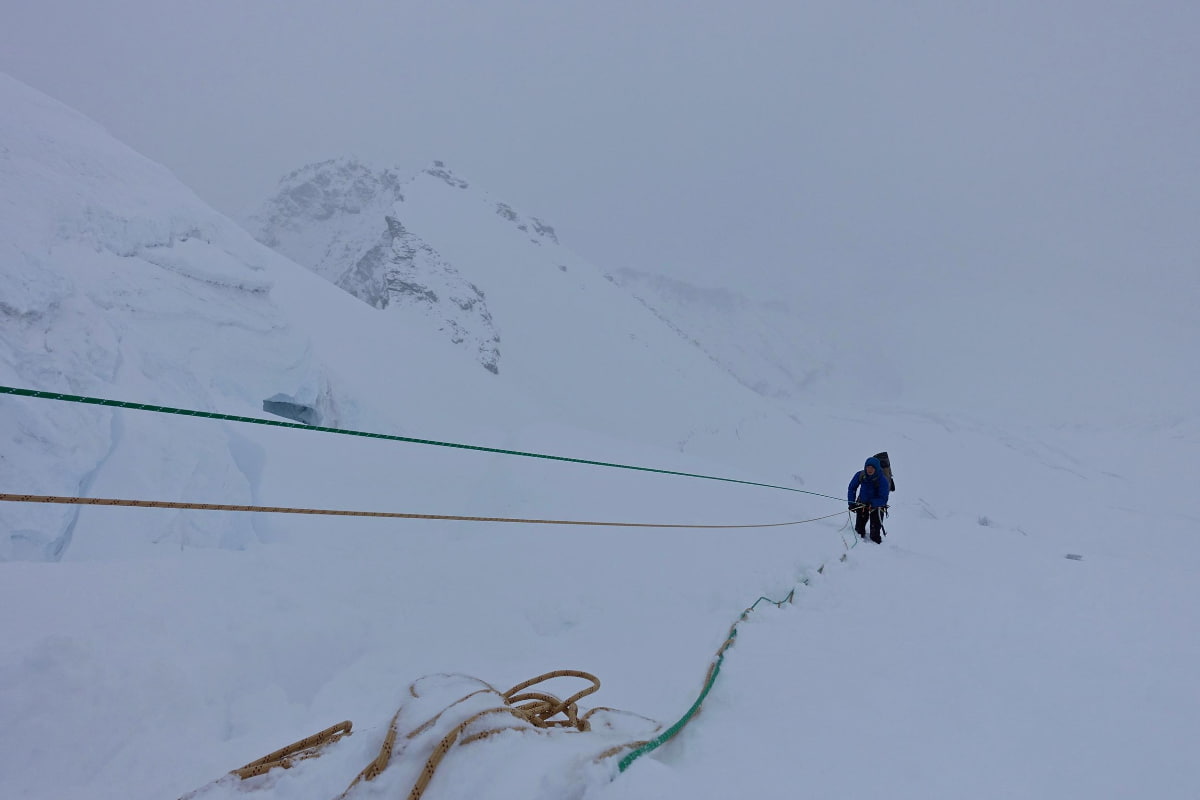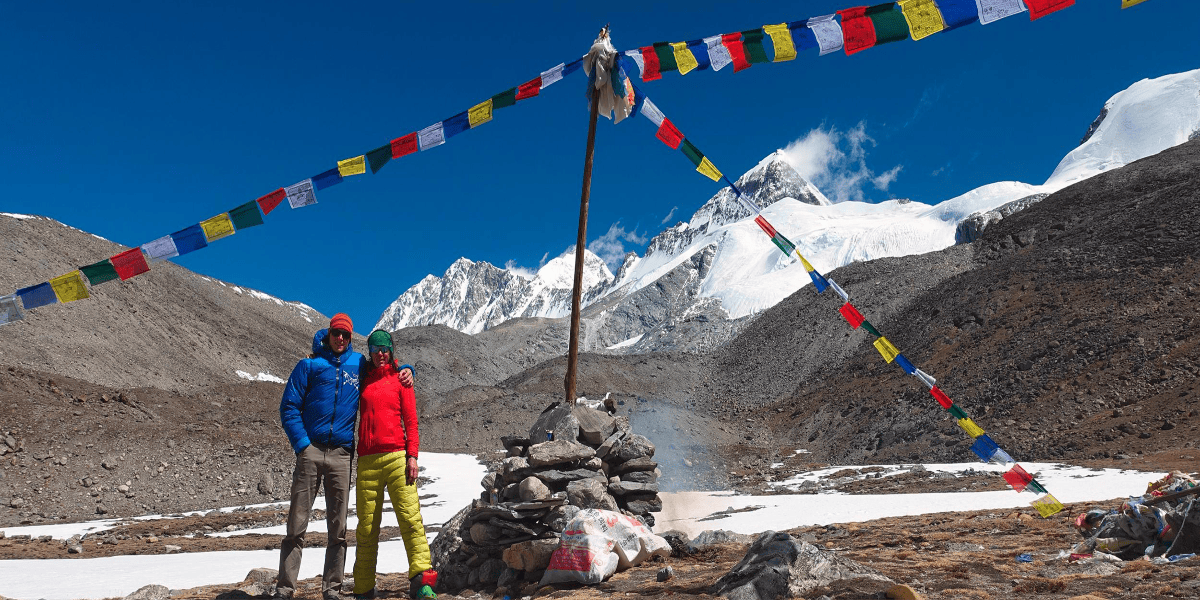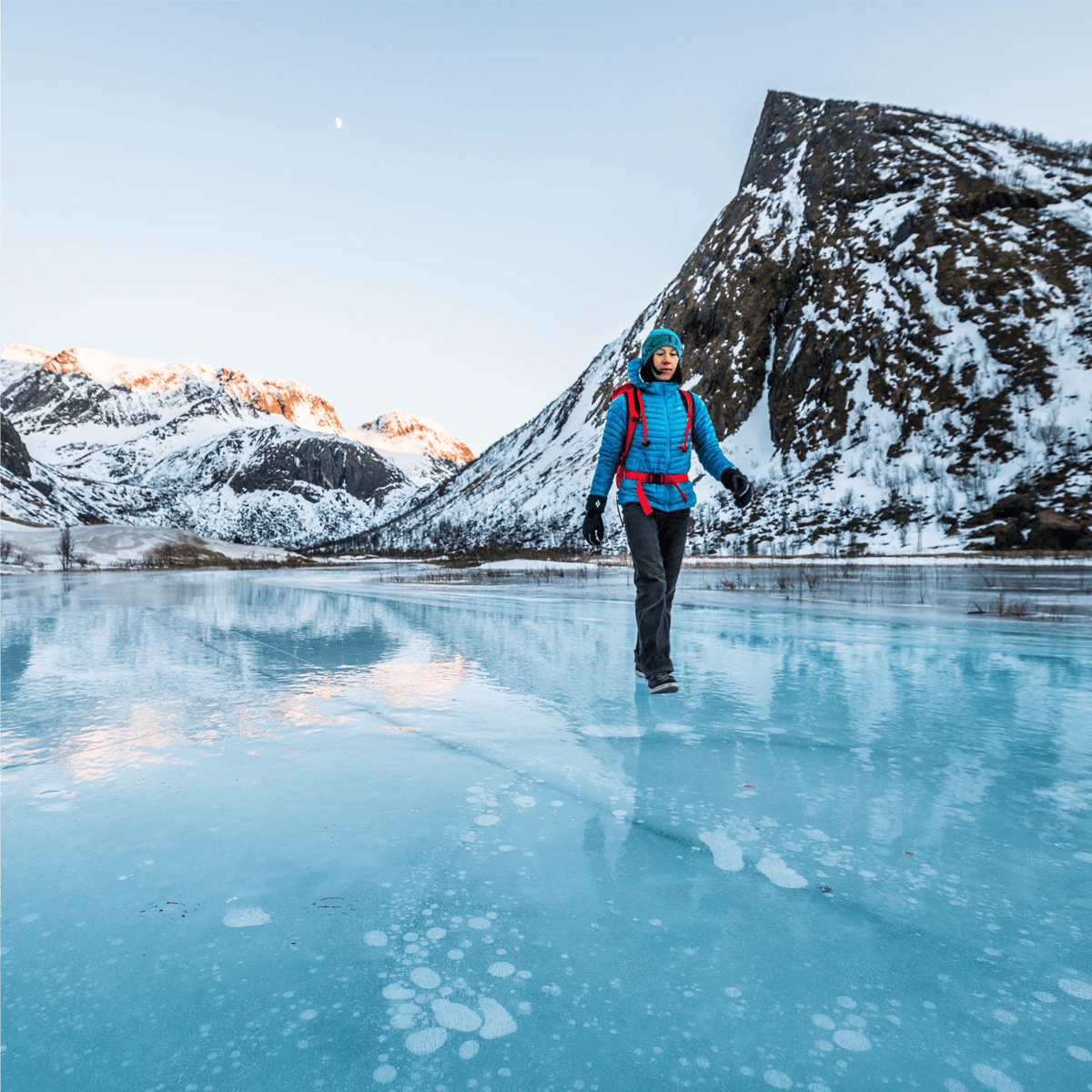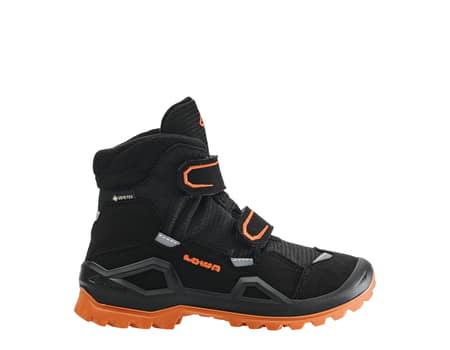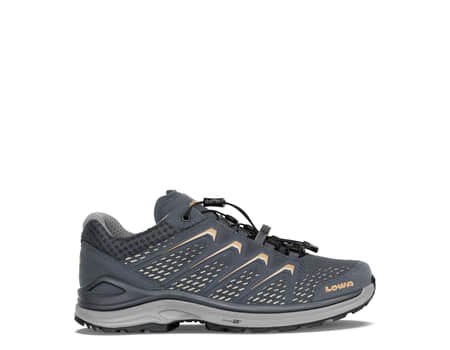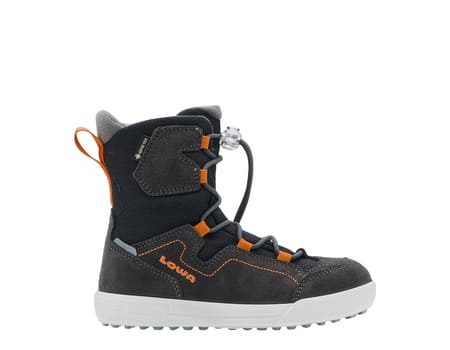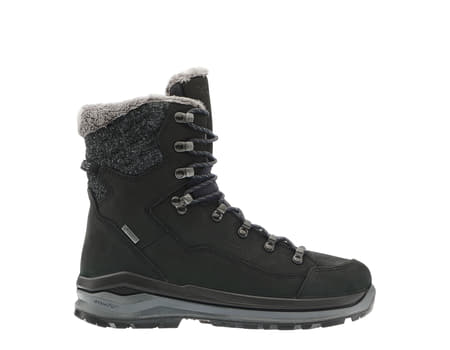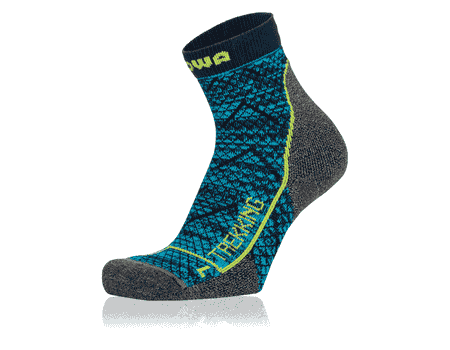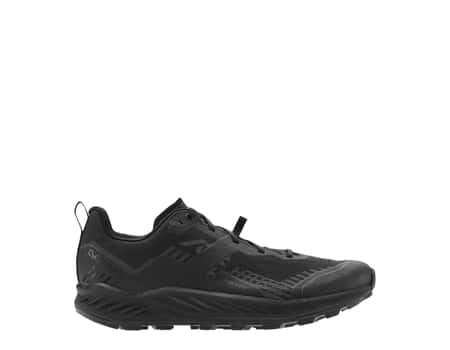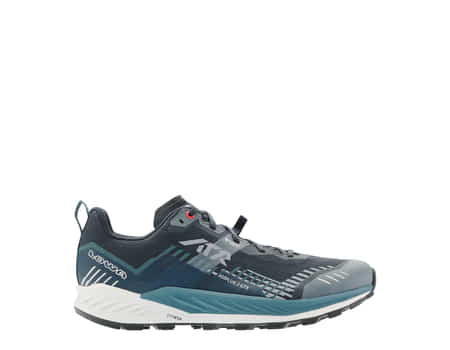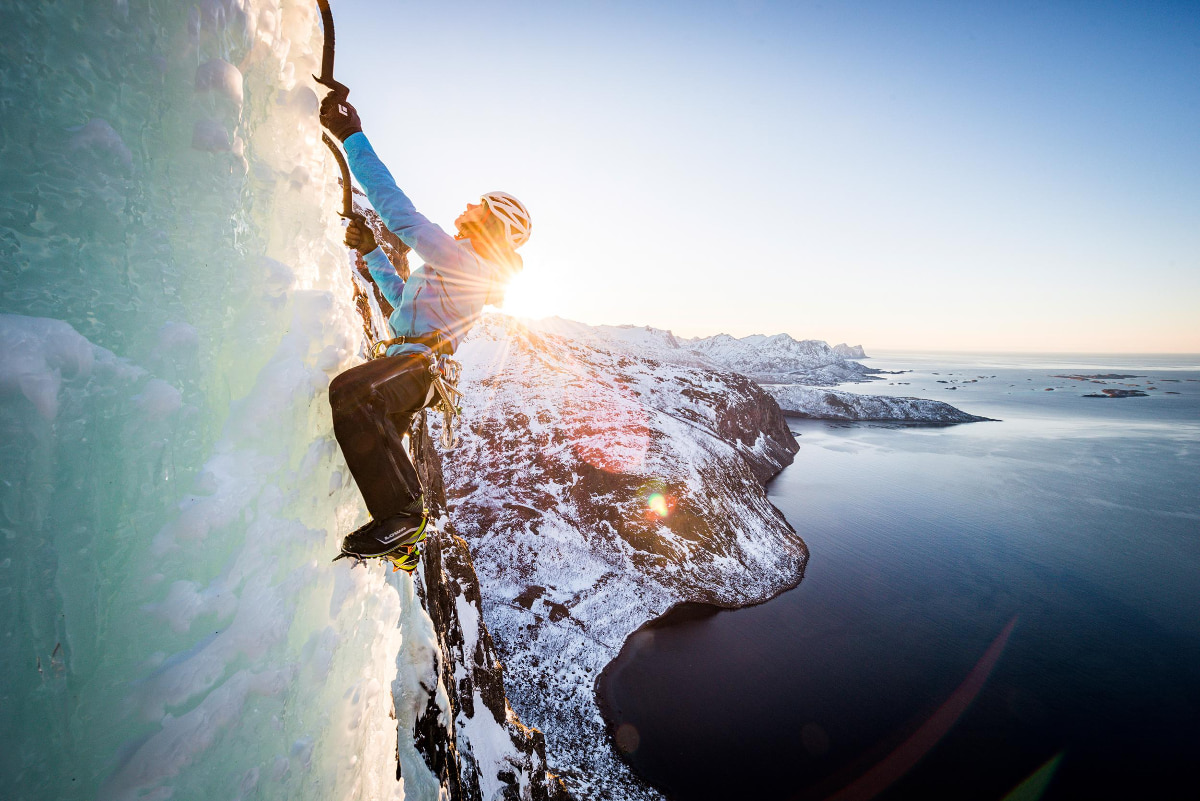Scary moment at icy heights
China - Together with Luka Lindič, LOWA-PRO team athlete Ines Papert has set herself the goal of climbing her first 8,000 metre peak: The Shishapangma south face - in alpine style, of course. But shortly after starting, the entire expedition changes within a few hours
The Shishapangma South Face is a classic among extreme climbs. It features steep and technically demanding climbing. Only very few teams dare to climb the difficult south face. So it's no surprise that Ines and Luka are the only ones attempting it this year. With a little help, the two reach the base camp at 5,300 metres on 17 April.
"From here on, we are responsible for everything ourselves. No Sherpa, no fixed ropes, no bottled oxygen. We climb in a small team."
Before tackling the Shishapangma south face, however, the two athletes still need to acclimatise. The team has chosen Nyanang Ri (7,071m), which is connected to Shishapangma via a ridge, for this purpose. The necessary equipment is transported to the mountain and the weather window seems to be sufficient. So they begin the ascent on 30 April. At 6,300 metres, they set up their second bivouac, which they place in a crevasse below the flank. Safe and well protected, Papert later recalls their feeling when choosing a place to sleep. But the incessant snowfall throughout the night would soon change this.
In the morning, around 5 a.m., the LOWA PRO team athlete remembers, the entire flank begins to slide: an avalanche!
INES AND LUKA SAVE WHAT CAN BE SAVED...
"We were startled out of our sleep when we realised what had just happened. We immediately recognised the seriousness of the situation. While Luka left the tent via the entrance, I tore a hole in the tent in panic, as the air was already running out. The weight of the snow was already pressing down on my body and I just wanted to get away. Luka pulled me out of the tent and we both stood outside in our socks and had to watch as our tent disappeared under the weight of the snow. Luka saved our shoes at the last moment."
IN SEARCH OF REFUGE
They seek refuge in a nearby small ice cave and wait for the weather to calm down. As soon as the weather permits, Luka Lindič shovels his way through the masses of snow in search of their equipment - without it, they are trapped on the mountain. Two long hours later, they are able to retrieve the equipment from the completely destroyed tent and begin their descent.
Ines remembers that, despite their experience, they are not unimpressed. "We were in shock for days, but we decided to continue the expedition. We are climbers and mountaineers, the reason can't be explained rationally after such an experience. But how to deal with it without constantly panicking? Many discussions followed, which led to the conclusion: We're staying. But our actual goal, the Shishapangma, was already receding into the distance," Ines tries to put it into words. Papert and Lindič will not attempt Nyanang Ri again: their new goal is Pungpa Ri.
"We decided to set our sights on a new goal and attempt the unclimbed west face of Pungpa Ri."
NO LUCK ON THE WAY TO THE SUMMIT
But the second goal, the summit of Pungpa Ri (7450m), which is also connected to Shishapangma, does not bring the athletes any luck either. Almost daily snowfall makes planning extremely difficult, even in advance. In a small weather window in mid-May - which predicts less snowfall but high wind speeds and icy temperatures of around -28 degrees Celsius at the summit - the team climbs up to 6500 metres, skipping the ABC. The remaining 1000 metres of altitude were to follow the next morning, but in this case too, nothing came of it.
"As soon as I put on the climbing harness, I lost what little feeling I had in my fingers and wondered how I was going to make it to the summit. Nevertheless, we climbed a little higher. I soon realised that I wasn't going to make it. A terrible feeling of total powerlessness spread."
DIFFICULT CONDITIONS ON THE MOUNTAIN
For their own safety, Papert and Lindič also decided to end this ascent attempt - the experienced athletes did not want to risk another moment like the one on Nyanang Ri. After their experiences on Nyanag Ri, the unstable weather conditions throughout the expedition and the fact that they were unable to acclimatise sufficiently, Team Papert and Lindič ultimately end the entire expedition prematurely.
